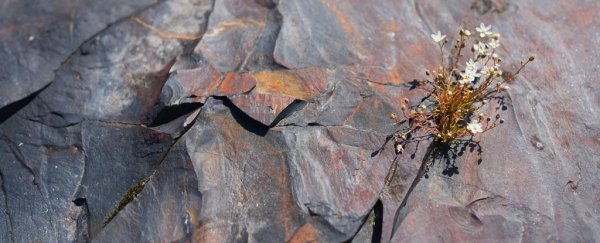Earth didn't always have this much oxygen. Roughly 2.4 billion years ago, the rise of cyanobacteria and the shifting of tectonic plates breathed new life into our planet, tipping off a Great Oxidation Event (GOE).
The surge of oxygen-hungry life that followed didn't last for long. Today, many scientists think the evolution of life 'overshot' the amount of oxygen actually available in the atmosphere. Evidence found last year suggests this triggered an abrupt and catastrophic mass extinction of microorganisms around two billion years ago that was even more dire than the dinosaur die-off.
Still, while the oxygen overshoot theory has become ever more popular in recent years, new research suggests it might actually be wrong.
In Russia, analysis of ancient sedimentary rock indicates that for millions of years after the GOE, conditions on Earth were more than suitable for the continued evolution of complex life.
"What we found contradicts the prevailing view - essentially we have clear evidence that atmospheric oxygen levels rose even further after the carbon isotope anomaly ended," says palaeogeographer Kaarel Mänd from the University of Alberta.
"This will force the Earth science community to rethink what drove the carbon and oxygen cycles on the early Earth."
The evidence comes from fresh drill cores in the Lake Onega area in the northwest corner of European Russia. Here, researchers have uncovered ancient shungite, a black lustrous mineral, from 2 billion years ago.
Composed almost solely of carbon, this shiny shale is one of the best archives we have to figure out environmental conditions from long, long ago.
At the moment, it's generally understood that a rise in oxygen more than 2 billion years ago led to a shift in carbon isotopes within sedimentary rocks, known as the Lomagundi–Jatuli Event (LJE). This suggests that massive amounts of organic matter were being buried in ocean sediments, leading to the release of excess oxygen; but following this, levels of oxygen dropped.
But within these shungite rock cores, deposited just after the end of the LJE, researchers found strikingly high traces of molybdenum, uranium, and rhenium, and these are metals commonly associated with abundant oxygen.
In fact, the concentrations, they discovered, were unrivalled by any other known point in early Earth's history, roughly comparable to the most "organic-rich modern marine sediments", or the most uranium-enriched "Precambrian shale measurement that has been reported to date."
If the shungite was deposited, then there simply must have been enough oxygen around.
The authors argue this conclusion undoubtedly forces a "re-evaluation of our basic view of this turbulent interval of Earth's history."
Other recent discoveries have also found large eukaryotic fossils as old as 2.1 billion years old, during this supposed plummet in available oxygen, although the results remain highly contentious.
Of course, even if the findings of the new research are true, this doesn't mean oxygen levels never went down. Instead, it implies our planet's oceans remained well-oxygenated for much longer than we thought after the GOE. Who's to say if oxygen levels plummeted after that.
The authors of the research argue that the strongly positive [uranium] isotopes found in the shungite samples are "most readily explained" by "globally well-oxygenated oceans and markedly elevated rates of local primary productivity."
This means that the end of the increased deposits of organic carbon during the LJE may not be the result of diminishing oxygen, but rather of something else. What that exactly is remains unclear, but that possibility means we might need to explore different explanations other than the ones we've got.
The study was published in Nature Geoscience.
